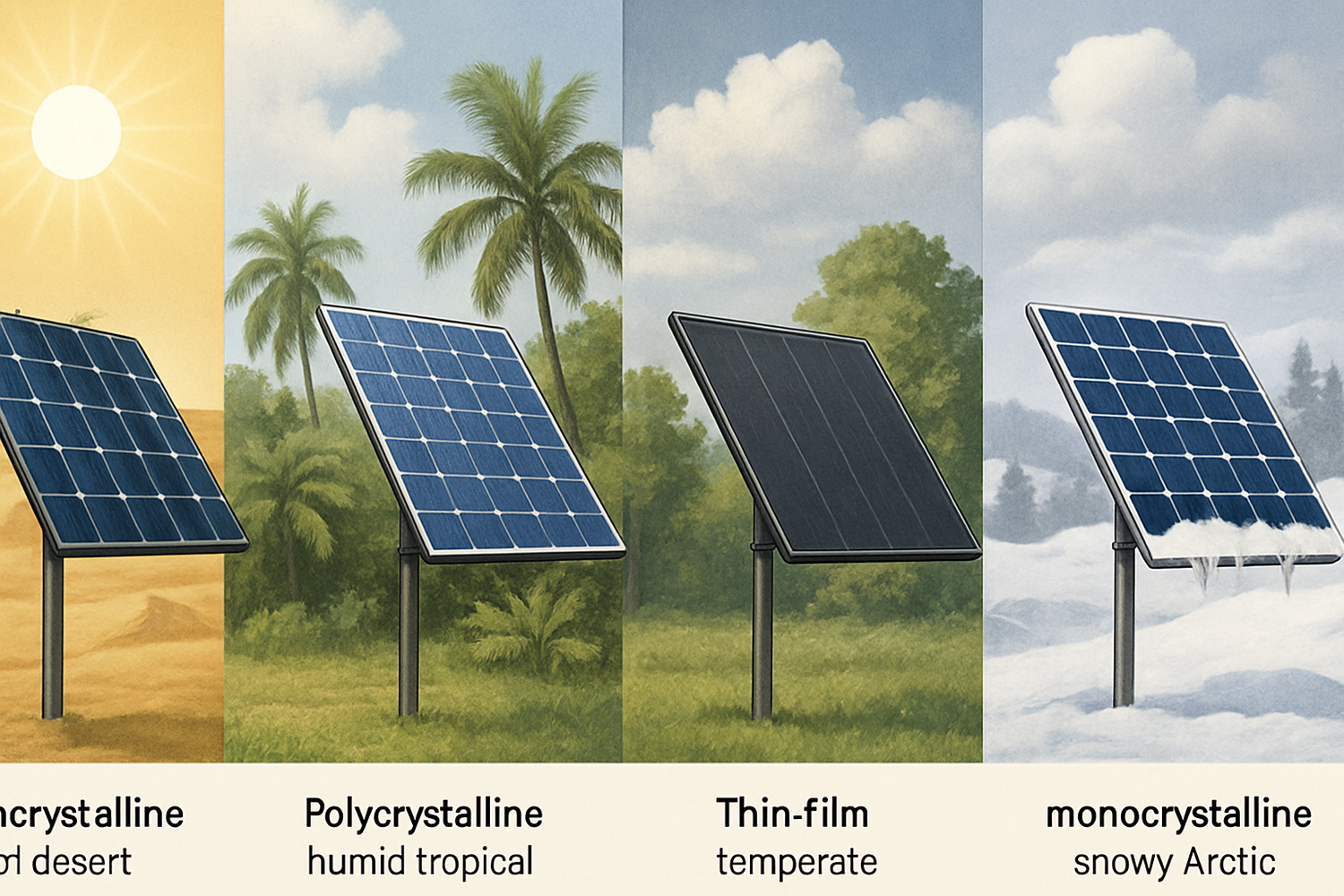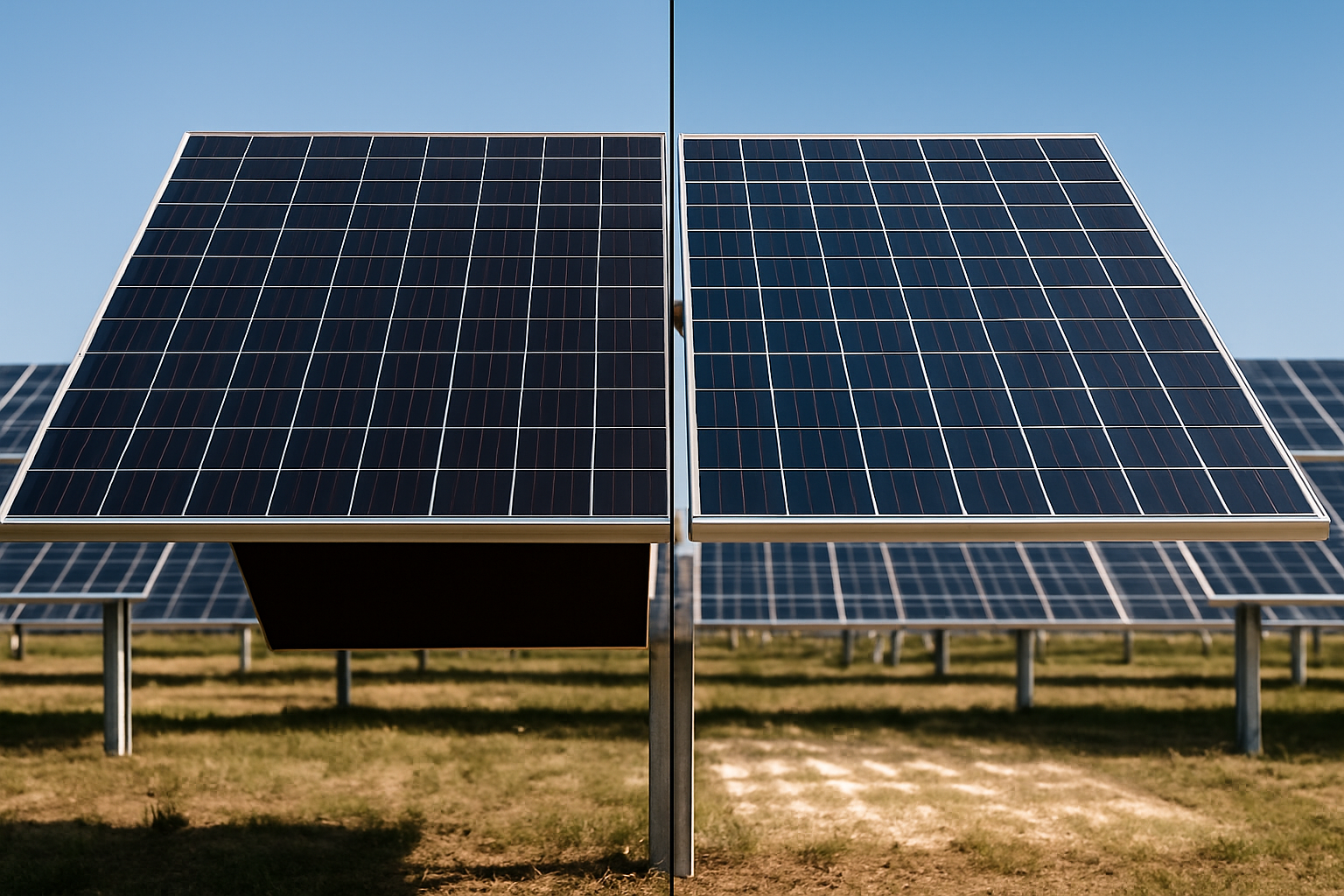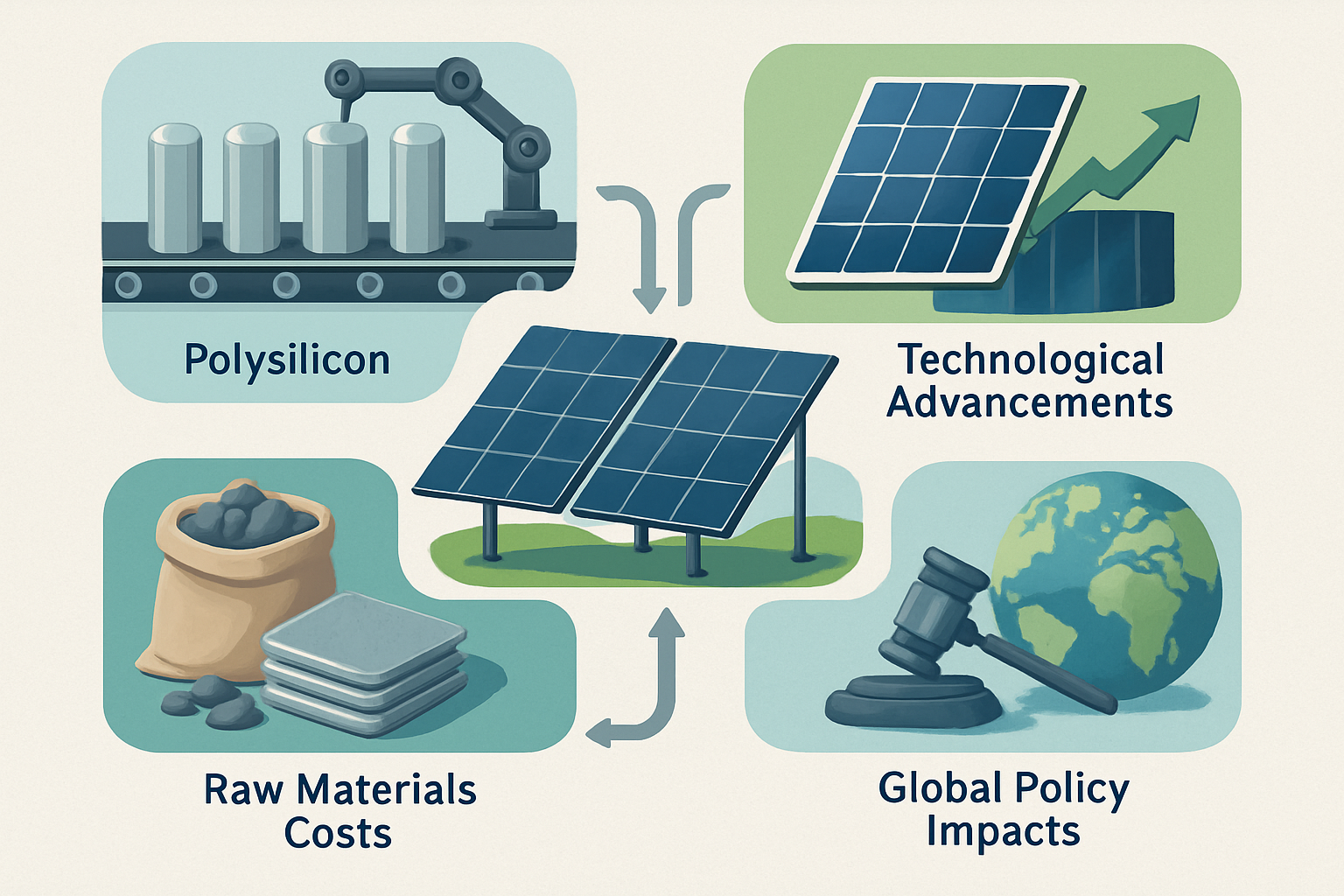Selecting the right photovoltaic (PV) module for your solar project is a critical decision. It goes beyond just power ratings. The local climate significantly influences a module's long-term performance and the overall financial viability of your system. Understanding this connection helps you reduce the Levelized Cost of Energy (LCOE) and achieve greater energy independence.
This article provides practical insights into how different climate conditions affect PV modules. We will guide you through selecting the optimal module type for your specific environment. This approach ensures your solar investment delivers maximum value over its lifespan.

Climate's Influence on PV Module Performance
The environment where you install solar panels plays a substantial role in their efficiency and longevity. Various climate factors can accelerate degradation or reduce energy output. Recognizing these impacts is the first step toward smart module selection.
Temperature and Its Impact on Efficiency
High temperatures are a primary concern for PV modules. As module temperature rises, their power output typically decreases. This phenomenon is quantified by a module's temperature coefficient. Crystalline silicon (c-Si) modules, including both monocrystalline and polycrystalline types, are particularly sensitive to heat. For instance, a c-Si module might lose around 0.3% to 0.5% of its power output for every degree Celsius increase above 25°C. In contrast, thin-film technologies, such as Cadmium Telluride (CdTe), often exhibit superior performance in hot climates due to lower temperature coefficients. This means they maintain a higher percentage of their rated power even as temperatures climb.
Humidity, Soiling, and Mechanical Stress
Humidity can contribute to various degradation mechanisms, including Potential Induced Degradation (PID) and corrosion of internal components. High humidity combined with heat creates a challenging environment for many module types. Soiling, caused by dust, sand, or pollution, also reduces module efficiency by blocking sunlight. Regular cleaning becomes a necessary mitigation measure in dusty regions. According to Quality infrastructure for renewables facing extreme weather, “The main extreme weather events that can impact solar PV installations are temperature, chemically inactive particles, hail, snow and frost, high solar irradiation, rainfall and strong winds.” These events, especially strong winds, snow loads, and hail, exert mechanical stress on modules. Modules with robust frames and durable glass are crucial in areas prone to such conditions.
Key PV Module Technologies and Climate Suitability
Different PV technologies offer distinct advantages in various climate scenarios. Understanding these characteristics helps you match the module to its environment for optimal results.
Crystalline Silicon (c-Si) Modules
Monocrystalline silicon modules are known for their high efficiency and sleek appearance. They perform well in temperate climates with clear skies. Polycrystalline silicon modules are generally more cost-effective and have slightly lower efficiencies. Both c-Si types are widely adopted but require careful consideration in extremely hot or humid environments due to their temperature sensitivity and potential for PID.
Thin-Film Technologies
Thin-film modules, including CdTe, amorphous silicon (a-Si), and Copper Indium Gallium Selenide (CIGS), present alternatives. CdTe modules, for example, often show better performance in hot, humid conditions. This is due to their lower temperature coefficients and better spectral response in diffuse light. This makes them a compelling choice for regions with consistently high ambient temperatures. While generally having lower efficiencies per square meter compared to c-Si, their performance advantages in specific climates can make them economically attractive.
| Feature | Crystalline Silicon (c-Si) | Thin-Film (e.g., CdTe) |
|---|---|---|
| Temperature Coefficient | Higher (more power loss at high temps) | Lower (less power loss at high temps) |
| Low Light Performance | Good | Often better (especially diffuse light) |
| Degradation Rate | Standard (can accelerate with PID/heat) | Often lower in specific hot/humid conditions |
| Efficiency per Area | Higher | Generally lower |
| Mechanical Robustness | Good (depends on construction) | Good (depends on construction) |
Reducing LCOE Risk Through Strategic Module Selection
The initial cost of PV modules is only one piece of the puzzle. The Levelized Cost of Energy (LCOE) considers the total cost of ownership over the system's lifetime. Choosing the right module for your climate directly impacts this crucial metric.
Optimizing Performance and Minimizing Degradation
A module well-suited to its climate will consistently produce more energy over its operational life. For example, in a hot desert environment, a module with a lower temperature coefficient will yield significantly more energy than one with a higher coefficient. This higher cumulative energy output directly lowers the LCOE. Furthermore, climate-specific degradation rates are vital. Modules degrade over time, but harsh climates can accelerate this process. Selecting modules designed for resilience in such conditions extends their effective lifespan, contributing to a lower LCOE. The Technology Roadmap - Solar Photovoltaic Energy 2010 highlights “How different climate zones in the United States affect the lifetime of PV modules,” underscoring this regional variability.
Reducing Maintenance and Operational Costs
The right module choice can also reduce ongoing operational expenses. In dusty regions, modules with anti-soiling coatings or designs that shed dust more easily can decrease the frequency and cost of cleaning. In areas with heavy snowfall, modules with good snow-shedding properties minimize energy losses and the need for manual snow removal. These reductions in maintenance directly contribute to a lower LCOE. For residual risks that cannot be fully mitigated, Quality infrastructure for renewables facing extreme weather suggests that “Insurance is usually used to cover the residual risk that cannot be mitigated by other measures.”
Practical Steps for Module Selection
Making an informed decision requires a systematic approach. Consider these steps to choose the best PV module type for your project.
Assess Local Climate Data and Module Specifications
Begin by gathering detailed climate data for your project location. This includes average and extreme temperatures, humidity levels, solar irradiance patterns, wind speeds, and precipitation. Next, thoroughly review the specifications of various PV modules. Look beyond the nominal power rating. Pay close attention to temperature coefficients, degradation rates (annual and warranty-backed), mechanical load ratings for wind and snow, and any specific certifications for harsh environments. Compare these specifications against your local climate data to identify modules that offer the best fit.
Understand Reliability Standards and System Integration
International standards like IEC 61215 for c-Si and IEC 61646 for thin-film modules provide a baseline for quality. However, these standards “were not designed to identify how modules wear out or fail in different climates and system configurations, or differentiate between products with short or long lifetimes, or quantify module lifetime for different applications or climates,” as noted in the Technology Roadmap - Solar Photovoltaic Energy 2010. This means you need to look beyond basic certification. Consider the manufacturer's track record and specific product testing for extreme conditions. Also, think about how the modules integrate with other system components, such as solar inverters and energy storage solutions. A robust energy storage system, like those featuring LiFePO4 batteries, can complement your PV array by storing excess energy. This ensures consistent power supply and enhances your overall energy independence, especially for off-grid solar solutions.
Concluding Thoughts
Choosing the correct PV module type based on climate is a strategic decision. It significantly impacts your system's long-term performance, reliability, and financial returns. By carefully evaluating climate data and module specifications, you can minimize LCOE risk and maximize your investment. Focusing on climate-specific performance ensures your solar energy system provides reliable and scalable power for years to come, moving you closer to complete energy independence.
Frequently Asked Questions
What is LCOE and why is it important for PV module selection?
LCOE, or Levelized Cost of Energy, represents the average cost per unit of electricity generated over the lifetime of a power plant. For PV module selection, a lower LCOE indicates a more cost-effective system. Choosing modules suited to the climate reduces LCOE by maximizing energy output, minimizing degradation, and lowering maintenance costs over the system's operational life.
How do extreme temperatures affect solar panel lifespan?
Extreme temperatures, both hot and cold, can accelerate the degradation of solar panels. High temperatures can lead to material stress and reduced efficiency, while rapid temperature fluctuations can cause thermal cycling stress. Modules not designed for these extremes may experience premature failure or reduced lifespan, increasing your LCOE.
Are thin-film modules always better in hot climates than c-Si modules?
Not always, but thin-film modules like CdTe often have a lower temperature coefficient than c-Si modules. This means they lose less efficiency as temperatures rise, making them a strong contender for consistently hot environments. However, c-Si technology continues to evolve, with some manufacturers offering c-Si modules optimized for high-temperature performance. Always compare specific module datasheets for your project's conditions.
What role does a solar inverter play in climate-specific PV systems?
A solar inverter converts the direct current (DC) electricity from your PV modules into alternating current (AC) for your home or grid. In challenging climates, inverters must be robust enough to withstand environmental conditions like extreme temperatures or humidity. Pairing efficient modules with a reliable solar inverter ensures optimal energy conversion and system stability, contributing to overall system performance and longevity.
Should I consider energy storage when selecting PV modules for a specific climate?
Yes, integrating energy storage, such as a home energy storage system with LiFePO4 batteries, is highly beneficial. It allows you to store excess solar energy generated during peak production times and use it when solar output is low (e.g., at night, on cloudy days, or during extreme weather). This enhances energy independence and system resilience, especially in climates with variable solar resources or frequent grid interruptions.





Leave a comment
All comments are moderated before being published.
This site is protected by hCaptcha and the hCaptcha Privacy Policy and Terms of Service apply.